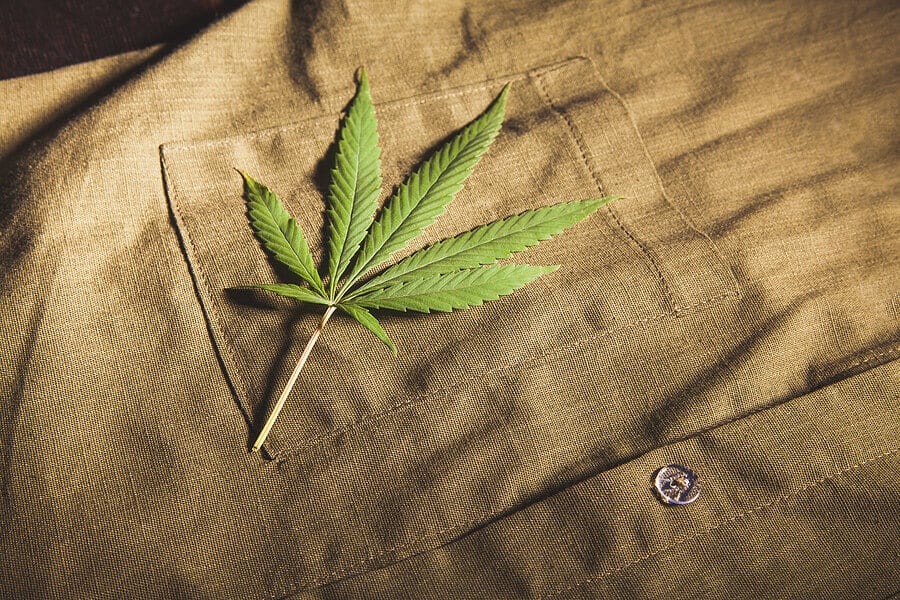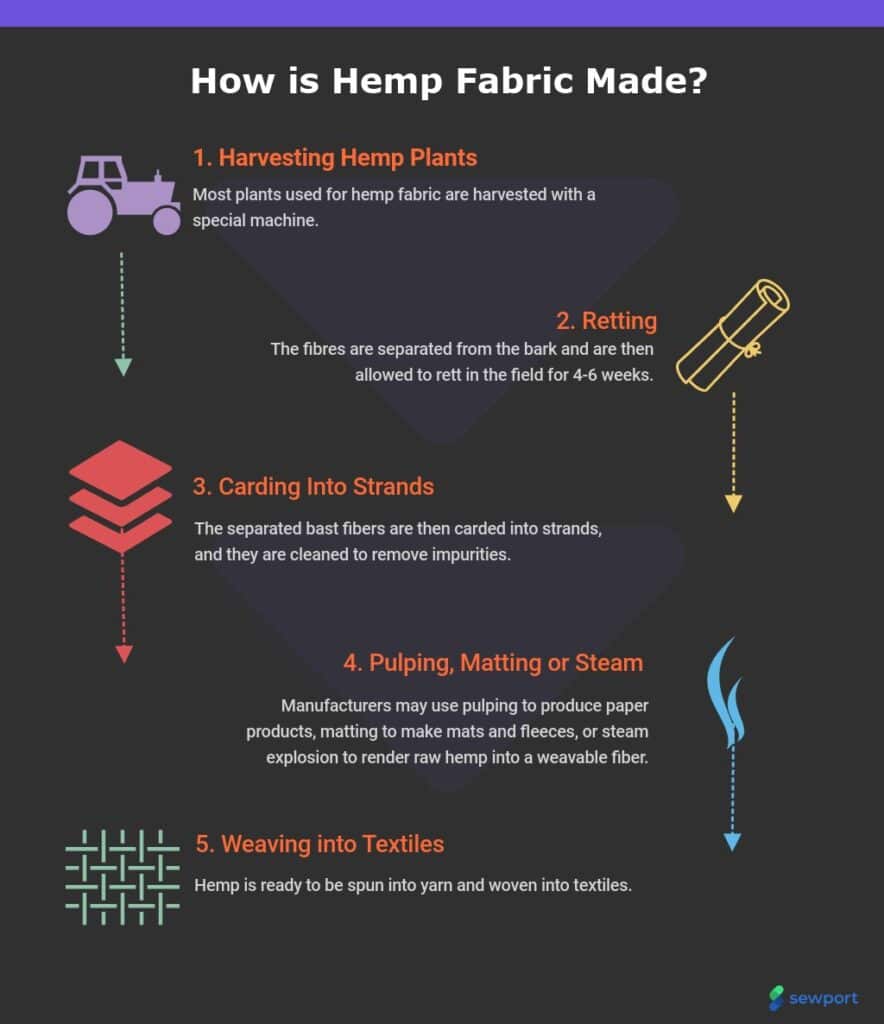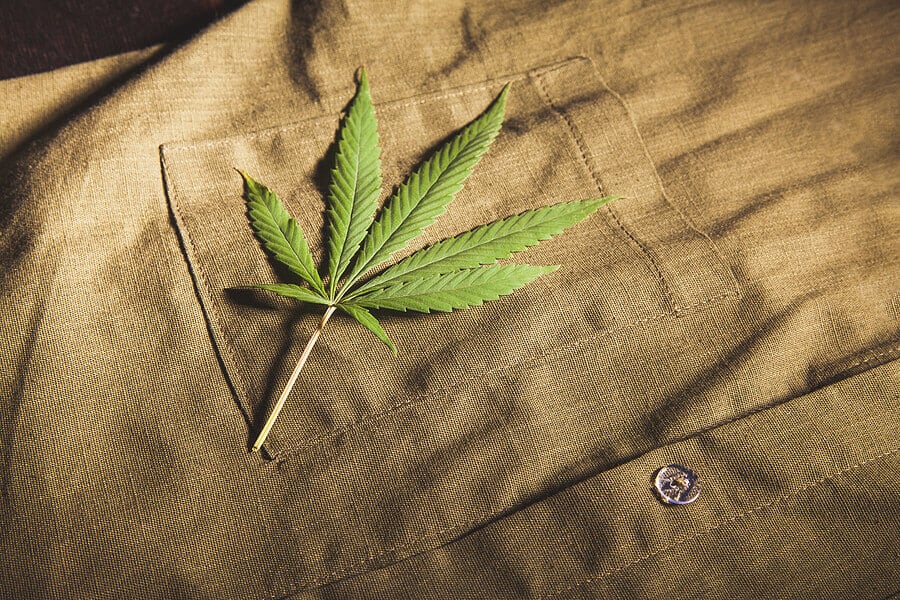If you’re on the hunt for clothing made from hemp, you’ve probably realized that not all claims of authenticity can be trusted. With the rising popularity of sustainable and eco-friendly fashion, it’s important for consumers to know how to verify if hemp is truly present in the garments they are purchasing. In this article, we will highlight some handy tips that can help you authenticate the presence of hemp in clothing, allowing you to make informed and conscious choices when it comes to your wardrobe. So, let’s dive into this guide and learn to spot the real deal!
Certifications and Labels
Look for Certified Organic Label
When shopping for hemp clothing, one of the first things you should look for is the Certified Organic label. This label ensures that the hemp used in the clothing has been grown without the use of synthetic pesticides, herbicides, or fertilizers. It guarantees that the hemp has been cultivated in a way that is environmentally friendly and sustainable. By choosing clothing with the Certified Organic label, you can be confident that you are supporting ethical and responsible farming practices.
Check for Global Organic Textile Standard (GOTS) Certification
Another important certification to look for is the Global Organic Textile Standard (GOTS) certification. This certification ensures that the entire production process of the clothing, from the harvesting of the raw materials to the finished product, meets strict environmental and social criteria. GOTS certification covers not only the organic status of the fiber but also the processing, manufacturing, and packaging of the clothing. By choosing clothing with GOTS certification, you can be assured that it has been produced sustainably and meets high ecological and social standards.
Consider Oeko-Tex Standard 100 Certification
In addition to the Certified Organic label and GOTS certification, it is also worth considering clothing that has been certified under the Oeko-Tex Standard 100. This certification is focused on ensuring that the clothing is free from harmful substances and chemicals. Oeko-Tex Standard 100 certification guarantees that the clothing has been tested for a wide range of harmful substances, including heavy metals, pesticides, and formaldehyde. By choosing clothing with this certification, you can have peace of mind knowing that it is safe for both you and the environment.
Fabric Testing
Burn Test
One method of authenticating hemp in clothing is through a burn test. Hemp fabric burns differently than other materials, making it a useful way to determine if a garment contains hemp. When you burn a piece of hemp fabric, it will produce a smell similar to burning paper or wood, and the ash left behind will be light gray and crumbly. This is in contrast to synthetic fabrics, which often produce a plastic-like smell and leave behind a hardened, melted residue.
Fiber Identification Test
If you want to be absolutely sure about the presence of hemp in a clothing item, a fiber identification test can be conducted. This test involves microscopic examination of the textile fibers to determine their composition. A trained professional can use this test to identify the presence of hemp fibers and differentiate them from other fibers such as cotton or synthetic materials. While this test may not be practical for regular consumers, it can be a reliable method used by experts in the field.
Microscopic Examination
Microscopic examination of the fabric is another way to authenticate hemp in clothing. Under a microscope, hemp fibers have a distinct look with a long, smooth, and lustrous appearance. They generally have a thick cell wall with characteristic markings or nodes. By examining the fabric under a microscope, you can determine if it contains hemp fibers or if it is made from another material.
Source and Supply Chain
Research Hemp Suppliers and Brands
To ensure the authenticity of hemp in clothing, it is important to do your research on the hemp suppliers and brands you are considering. Look for brands that have a reputation for sourcing their hemp from reliable and reputable suppliers. Check if these suppliers have a track record of using sustainable and ethical farming practices. By choosing brands that have transparent and trustworthy supply chains, you can be more confident in the authenticity of the hemp used in their clothing.
Check for Transparent Supply Chain
transparency is key when it comes to verifying the authenticity of hemp in clothing. Look for brands that provide detailed information about their supply chain and manufacturing process. A transparent supply chain ensures that the clothing has been made with genuine hemp fibers and that there are no hidden steps or materials that could compromise its authenticity. Brands that are open about their supply chain demonstrate their commitment to quality and authenticity.
Verify Origin of Hemp Fiber
Verifying the origin of the hemp fiber used in clothing can also be helpful in authenticating its authenticity. Look for clothing brands that clearly state where their hemp fiber is sourced from. Ideally, the hemp should be grown and harvested in a country or region known for its high-quality hemp production. By knowing the origin of the hemp fiber, you can have greater confidence in the authenticity and quality of the clothing.
Texture and Appearance
Hemp’s Unique Texture
One of the distinctive characteristics of hemp fabric is its unique texture. Hemp fibers have a slightly rough and coarse feel, especially when compared to softer materials like cotton. When examining hemp clothing, run your hands over the fabric to feel its texture. Authentic hemp fabric will have a natural, earthy texture that sets it apart from other materials.
Presence of Slubs or Irregularities
Hemp clothing often exhibits slubs or irregularities in the fabric. These slubs are thickened parts of the hemp yarn that create slight variations in the fabric’s texture. These irregularities are a natural feature of hemp fabric and add to its rustic and organic look. When authenticating hemp in clothing, look for these slubs or irregularities as they are a good indicator of genuine hemp fabric.
Natural and Earthy Colors
Hemp fabric is known for its natural and earthy colors. Authentic hemp clothing often comes in shades of beige, brown, or green, reflecting the natural color of the hemp fiber. These colors are typically achieved without the use of synthetic dyes. When examining hemp clothing, look for these natural hues as they are a sign of genuine hemp fabric.
Sustainable Production
Look for Sustainable Farming Practices
Authentic hemp clothing is produced using sustainable farming practices. Look for brands that prioritize organic and regenerative farming methods. Sustainable hemp farming practices involve minimal use of water, pesticides, and synthetic fertilizers, which reduces the environmental impact. By supporting clothing brands that promote sustainable farming, you are contributing to a greener and more sustainable fashion industry.
Consider Water Usage and Pesticide Dyes
Water usage and the use of pesticide dyes are important factors to consider when authenticating hemp in clothing. Sustainable hemp production minimizes water usage through efficient irrigation systems and rainwater harvesting. Additionally, pesticides and synthetic dyes should be avoided as they can have detrimental effects on both the environment and human health. Authentic hemp clothing will be produced using natural and eco-friendly dyes, or may even be left undyed to showcase the natural color of the hemp fiber.
Check for Fair Trade Practices
In addition to sustainable farming practices, it is essential to consider fair trade practices when authenticating hemp in clothing. Fair trade ensures that farmers and workers involved in the hemp production process are paid fair wages and work in safe conditions. Look for brands that have certifications or partnerships with fair trade organizations to ensure that the clothing you purchase supports ethical and equitable production practices.
Feel and Comfort
Breathability and Moisture-Wicking
Hemp fabric is known for its excellent breathability and moisture-wicking properties. Its natural fibers allow air to circulate freely, helping to regulate body temperature and prevent sweat from being trapped on the skin. When authenticating hemp clothing, consider its breathability and moisture-wicking capabilities. Genuine hemp fabric will feel cool and comfortable on the skin, making it ideal for warm weather and active lifestyles.
Softness and Comfort
While hemp fabric has a slightly rough texture, it can still be soft and comfortable to wear. As a natural fiber, hemp becomes softer with each wash, making it more comfortable over time. When assessing the softness and comfort of hemp clothing, take into account its initial texture as well as its potential for softening with use and care.
Drapability and Wrinkle Resistance
Authentic hemp clothing has good drapability and can drape nicely against the body, conforming to its contours. It is a versatile fabric that can be used for a variety of clothing styles. Additionally, hemp fabric is naturally wrinkle-resistant, meaning it retains its shape and looks neat even after hours of wear. When examining hemp clothing, consider its drapability and wrinkle resistance as these characteristics are indicative of genuine hemp fabric.

This image is property of www.forgeskiphire.co.uk.
Price Comparison
Compare Hemp Prices with other Fabrics
When it comes to authenticating hemp in clothing, comparing prices with other fabrics can provide valuable insights. While it is true that hemp fabric can be more expensive than some synthetic materials, suspiciously low prices may indicate that the clothing contains little to no genuine hemp. Comparing prices across different brands and fabrics can help you identify reasonable price ranges and avoid potential scams or misleading claims.
Suspicion of Unusually Low or High Prices
If a clothing item that claims to be made of hemp is priced unusually low, it is important to approach it with caution. Extremely low prices could be a red flag indicating the presence of counterfeit or poor-quality fabrics. On the other hand, excessively high prices do not necessarily guarantee authenticity either. While premium hemp clothing may come with a higher price tag due to its quality and sustainability, it is essential to consider other factors such as certifications, brand reputation, and overall quality before making a purchase.
Consider Quality and Brand Reputation
Authenticating hemp in clothing goes beyond just the price. Consider the overall quality of the garment, including the stitching, finishing, and durability. A reliable indicator of authenticity is the brand’s reputation and track record. Look for brands that are known for their commitment to sustainable and ethical practices, as they are more likely to produce genuine hemp clothing of high quality.
Read Customer Reviews
Look for Verified Customer Reviews
Reading customer reviews can provide valuable insights into the authenticity of hemp in clothing products. Look for verified customer reviews on reputable online platforms to ensure the feedback is genuine. These reviews can give you a better understanding of the experiences of other customers and help you make a more informed decision about the authenticity and quality of the clothing you are considering.
Consider Reputed Online Retail Platforms
Reputed online retail platforms often have a system in place to verify customer reviews, ensuring that they are genuine and trustworthy. When looking for customer reviews, consider checking platforms that have a good reputation for providing reliable information. Trusted platforms typically have mechanisms in place to detect and remove fake or misleading reviews, providing more accurate and reliable feedback.
Seek Feedback from Hemp Clothing Enthusiast Communities
Engaging with hemp clothing enthusiast communities can provide valuable insights into the authenticity of different clothing brands and products. These communities often have members who are well-versed in hemp textiles and can share their knowledge and experiences. By seeking feedback and advice from hemp clothing enthusiasts, you can tap into a wealth of information and increase your understanding of how to authenticate hemp in clothing.
This image is property of i.shgcdn.com.
Consult a Hemp Expert
Seek Advice from Industry Experts
If you want to ensure the authenticity of hemp in clothing, seeking advice from industry experts is highly recommended. Hemp experts, such as textile specialists or consultants, can help you navigate the intricacies of hemp textiles and provide valuable guidance on authenticating hemp in clothing. Their in-depth knowledge and expertise can help answer any specific questions you may have regarding the authenticity and quality of hemp clothing.
Contact Hemp Clothing Associations
Connecting with hemp clothing associations can also be beneficial in verifying the authenticity of hemp in clothing. These associations often have resources and information about trusted brands, certifications, and best practices. Furthermore, they might be able to provide you with guidance on how to identify genuine hemp clothing and help you make informed decisions when purchasing hemp products.
Connect with Hemp Farmers or Processors
Reaching out to hemp farmers or processors can give you firsthand insights into the authenticating process. These individuals have in-depth knowledge of hemp cultivation, processing, and textile production. By directly engaging with them, you can learn more about the characteristics of genuine hemp fabric and gain a deeper understanding of how to authenticate hemp in clothing.
Authenticating Specific Hemp Blends
Identify Hemp Blended with Cotton
Hemp is often blended with other fibers, with cotton being one common example. When authenticating a hemp-cotton blend, consider the ratio of the two fibers. Hemp-cotton blends typically have a slightly softer texture and may exhibit a combination of hemp’s unique texture and cotton’s smoothness. Identifying the presence of cotton in a hemp blend can help authenticate the fabric composition of the clothing.
Differentiate Hemp-Linen Blends
Hemp and linen are both natural fibers, and clothing made from hemp-linen blends can provide a unique blend of characteristics. While linen has a similar earthy texture to hemp, it is typically smoother and softer. Authenticating a hemp-linen blend involves recognizing the combination of these fabric characteristics. Evaluate the texture and appearance of the fabric and consider the label or product description to determine the fiber composition.
Recognize Hemp-Polyester Blends
Hemp fibers can also be blended with synthetic fibers like polyester. Authenticating a hemp-polyester blend involves assessing the fabric’s texture, appearance, and performance characteristics. Hemp-polyester blends may exhibit some of the distinctive qualities of hemp, such as its natural color or unique texture, alongside the durability and wrinkle resistance of polyester. Keep in mind that the presence of polyester indicates a blend, and the amount of hemp in the fabric is likely to be lower than in a pure hemp garment.
In conclusion, authenticating hemp in clothing requires a multi-faceted approach that involves considering certifications and labels, conducting fabric tests, understanding the source and supply chain, evaluating texture and appearance, assessing sustainable production practices, considering comfort and feel, comparing prices, reading customer reviews, consulting experts, and recognizing specific hemp blends. By following these tips and being diligent in your research, you can be confident in selecting and authenticating genuine hemp clothing. Embrace the sustainable and eco-friendly qualities of hemp and contribute to a more ethical and responsible fashion industry.

This image is property of s3.eu-west-2.amazonaws.com.
Recent Posts
Discover how bubble hash is rated on a 1 to 6 scale. From texture and color to aroma and potency, learn the key factors that determine the quality of bubble hash. Whether you're a seasoned cannabis...
Looking to learn about the most popular style of hash? This article explores the different types, from traditional to bubble hash, and reveals the people's favorite. Join us on a journey through the...

